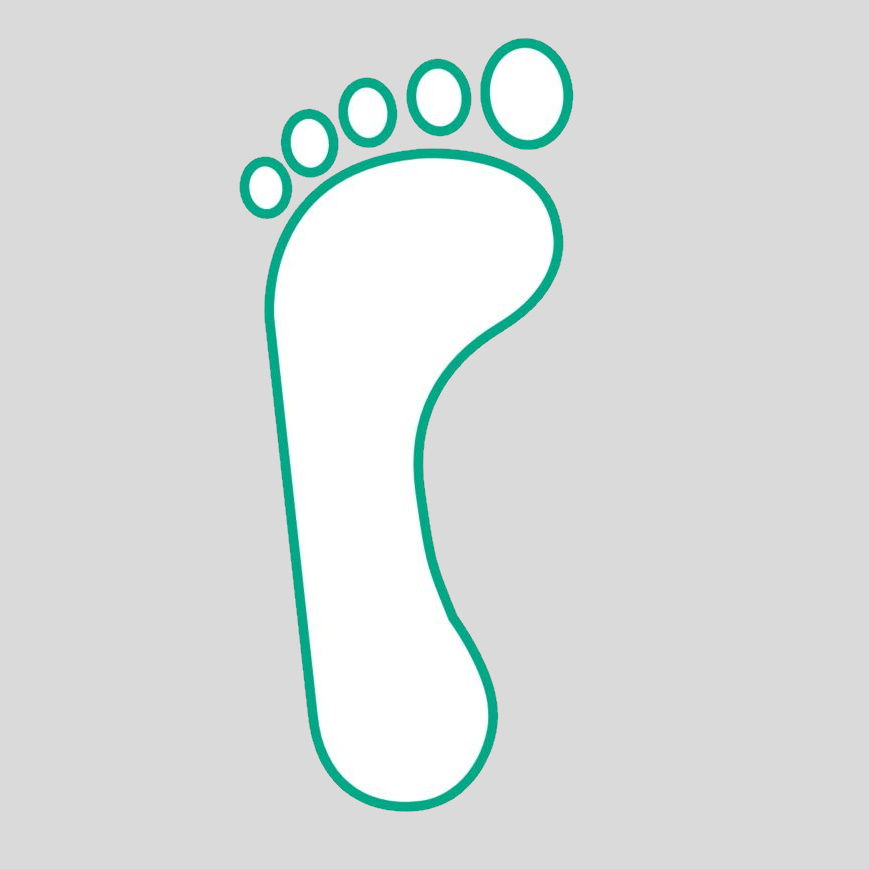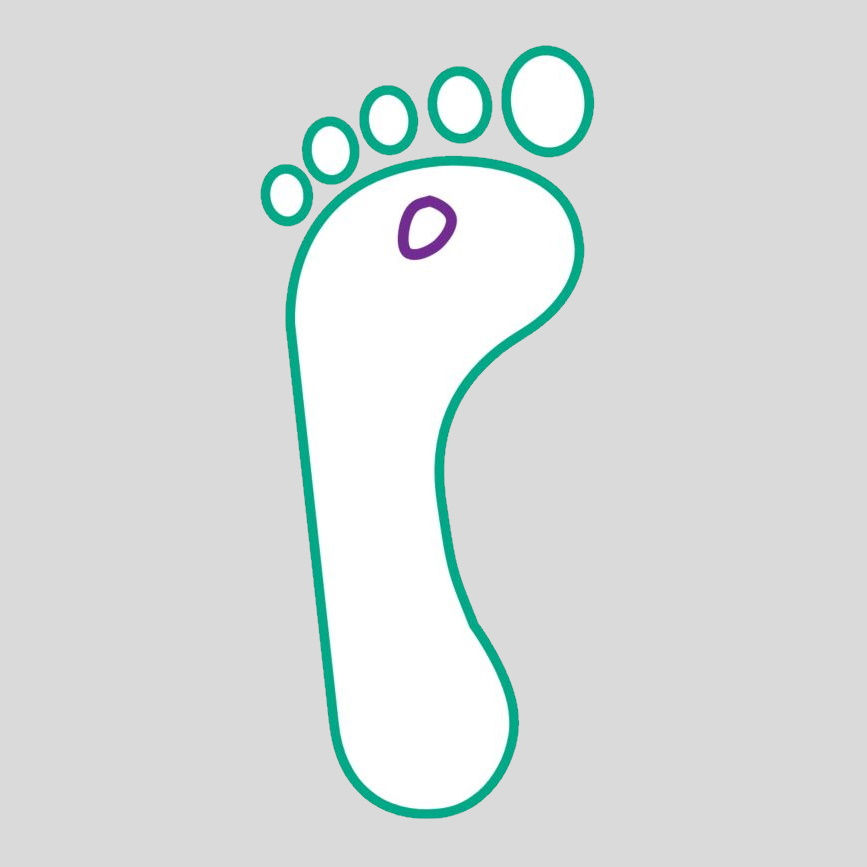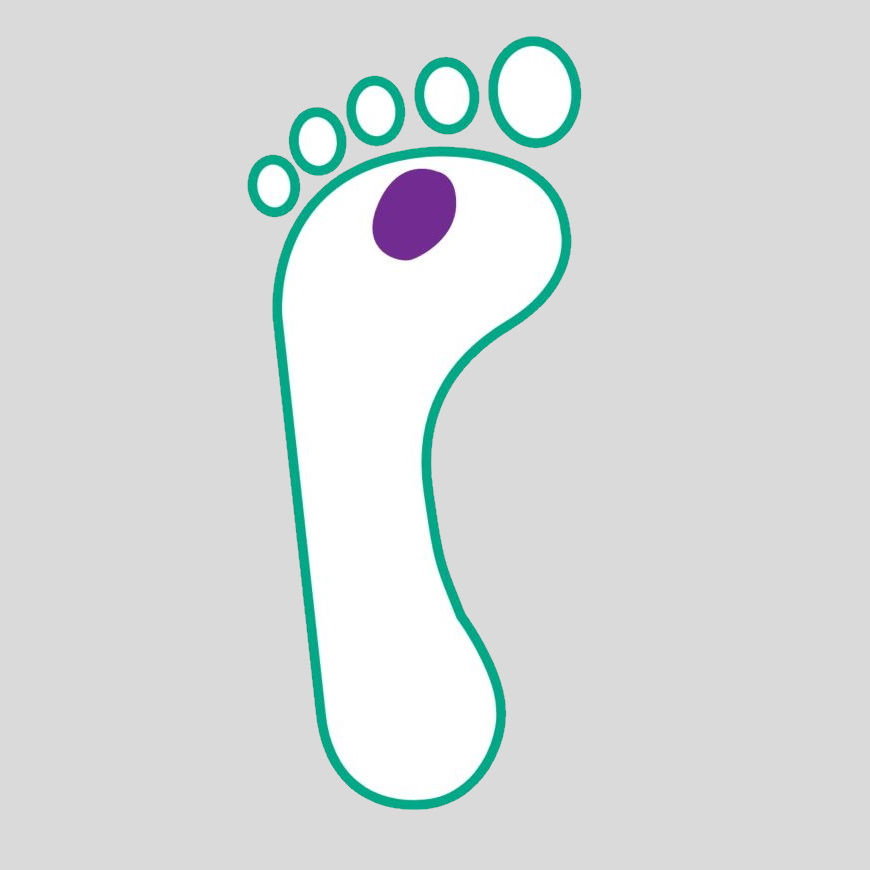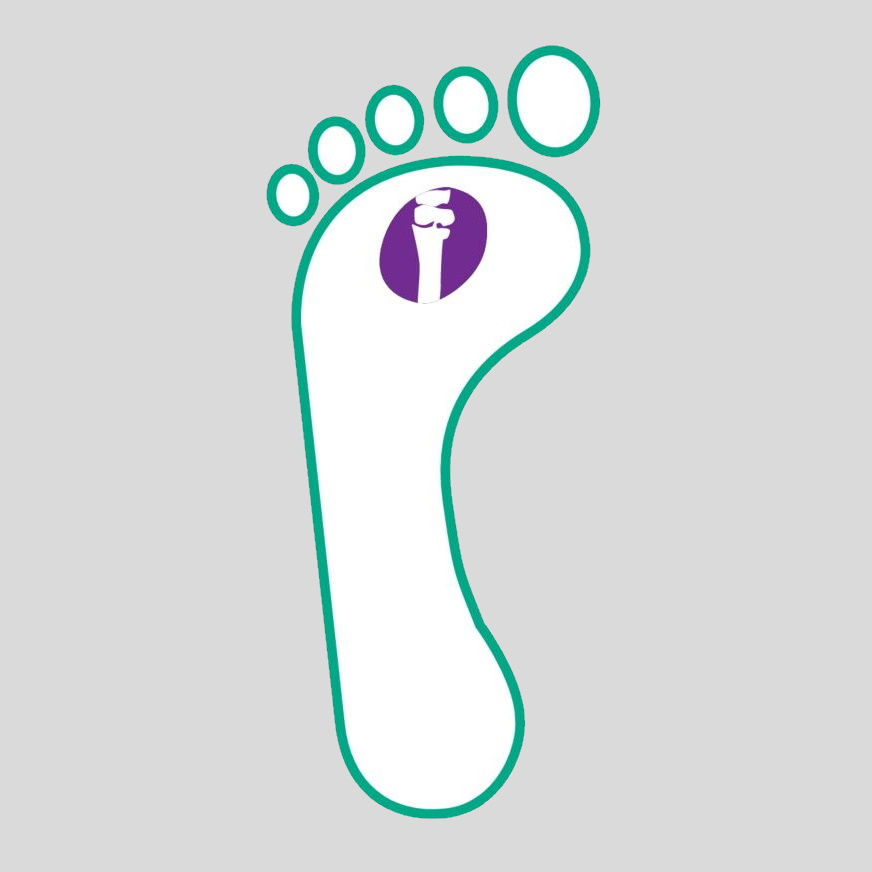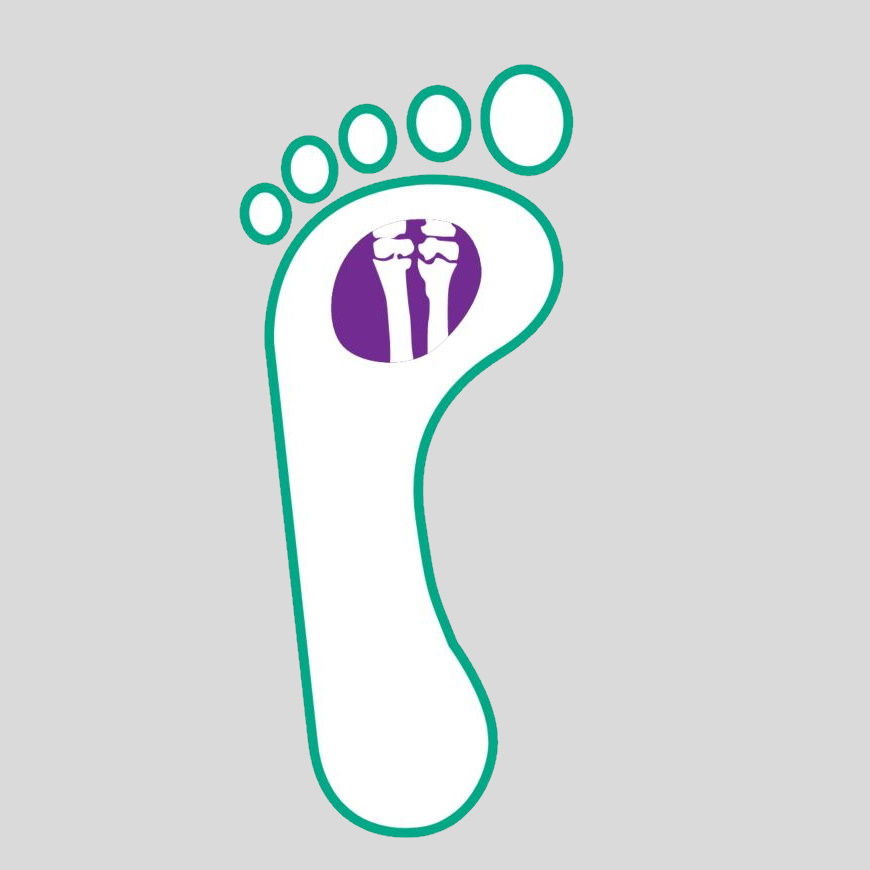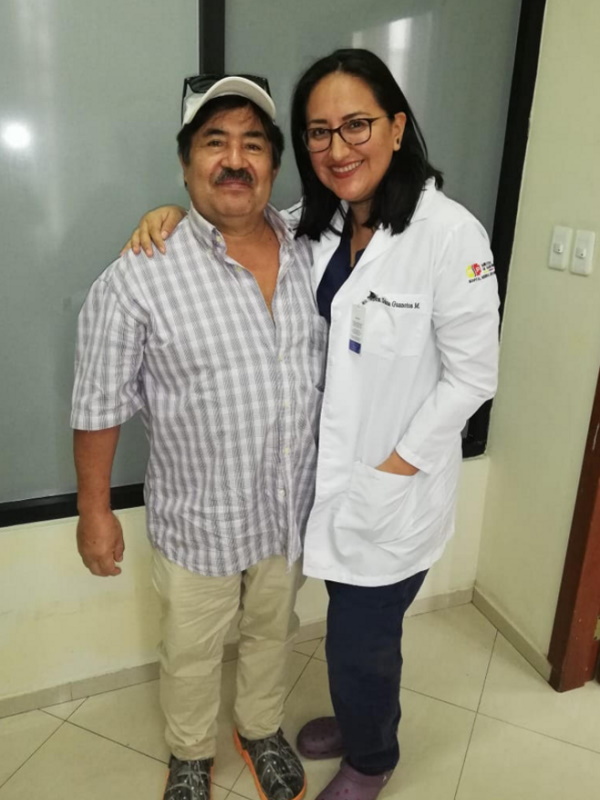Sei uscito con successo.
Not registered yet?
Aiutare a prevenire e trattare le ulcere del piede diabetico
Rischio di insorgenza di ulcere del piede diabetico
La sindrome del piede diabetico (DFS) è una complicanza comune del diabete mellito che colpisce un quarto dei pazienti affetti da diabete in un certo momento della loro vita. [1] Il rischio di sviluppare DFS aumenta con il passare del tempo.
Sei un operatore sanitario?
Cliccando 'Confirm" dichiari di essere un operatore sanitario.
Se sei un paziente o un giornalista visita le pagine a te dedicate.
Conferma Sì, sono un operatore sanitario. Cancella No, non sono un operatore sanitario.Possibili conseguenze: Ulcera del piede diabetico (DFU) o piede di Charcot
Una conseguenza del DFS è una lesione cutanea definitiva o un'ulcera del piede, che include tutti i cambiamenti del piede conseguenti alla polineuropatia diabetica, nonché i cambiamenti microangiopatici e macroangiopatici diabetici.
I pazienti possono anche sviluppare il piede di Charcot, che è un'altra manifestazione di DFS. Il piede di Charcot è una deformazione caratterizzata da un deterioramento del metabolismo osseo dovuto al diabete, che comporta fratture delle ossa, lussazioni articolari, fusione di frammenti ossei e altre deformazioni complesse del piede. Un altro nome per il piede di Charcot è l'osteoartropatia diabetica.
Il piede diabetico Charcot può svilupparsi senza ulcere del piede, ma è spesso associato alle ulcere del piede diabetico. Le deformità causano ulcere da pressione a causa della posizione eretta o della deambulazione, o semplicemente quando i pazienti indossano scarpe non progettate per la loro specifica anatomia del piede. [1,2]
Il diabete può interessare il sistema nervoso periferico in molti modi. Spesso i pazienti avvertono intorpidimento, formicolio, dolore e/o debolezza che iniziano nei piedi e aumentano il rischio di ulcere del piede. Ciò è causato da scarpe strette, calze abrasive o o da un microtrauma che non è stato notato sulla cute. Inoltre, la resistenza della cute ai traumi può essere compromessa perché la funzione degli appendici cutanei, inclusi i follicoli piliferi e le ghiandole sebacee, viene alterata nella neuropatia diabetica. [3,4]
Un altro fattore di rischio che contribuisce al DFS è l'angiopatia diabetica. Arterie più grandi si irrigidiscono a causa di fibrosi, ingrossamento del mezzo di coltura, calcificazione e molti altri processi (macroangiopatia). Ma anche i piccoli vasi, in particolare lo strato interno dei capillari, sono influenzati dal diabete che comprende la loro funzione (microangiopatia). Entrambi possono contribuire in modo critico a DFS. [1,5,6,7]
Integrità cutanea del piede
Prevenire la formazione di ulcere del piede diabetico
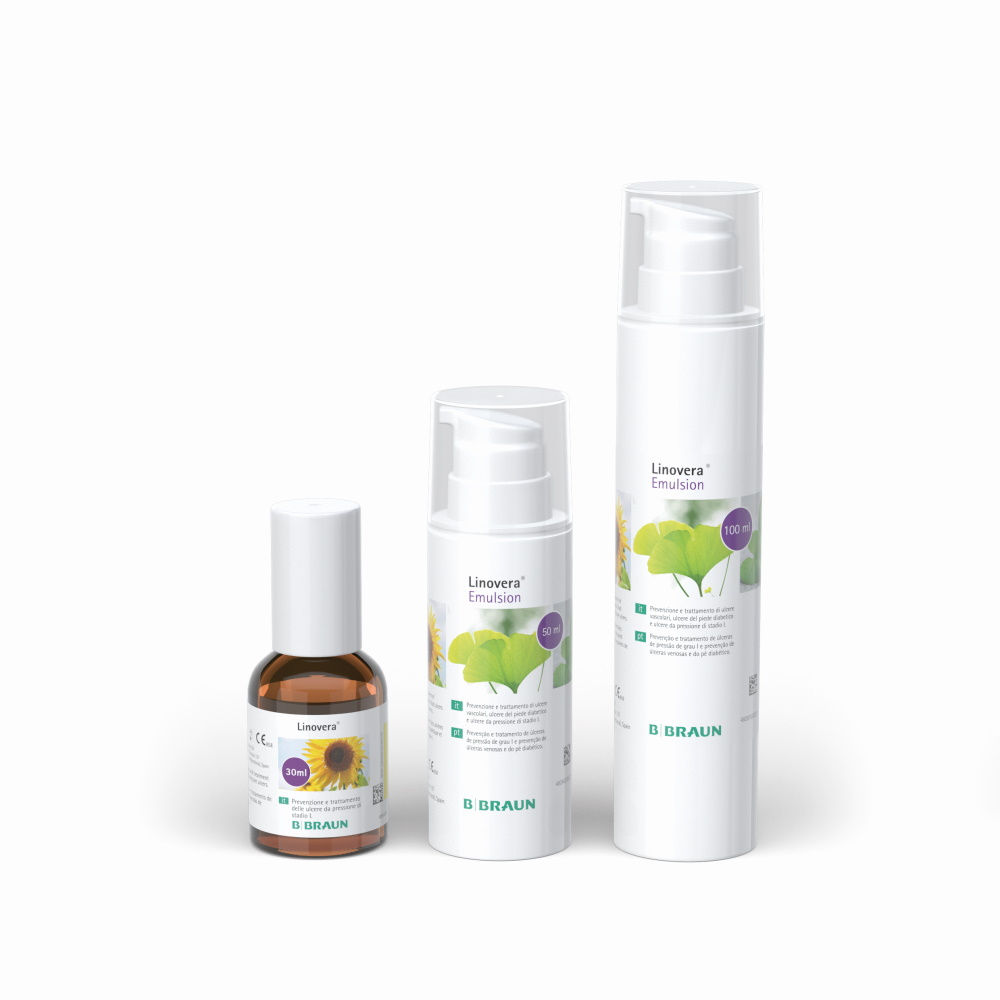
La formulazione di Linovera® si basa su acidi grassi iperossigenati, importanti acidi linoleici che possono contribuire a una struttura cutanea sana. Tra gli altri ingredienti troviamo l'Aloe Vera che agisce come antiflogistico e idratante e la Centella Asiatica, agente tonico lenitivo per la cute. Linovera® protegge la cute, riducendo le forze da taglio e di attrito e mantiene la funzione di barriera idratante della cute.
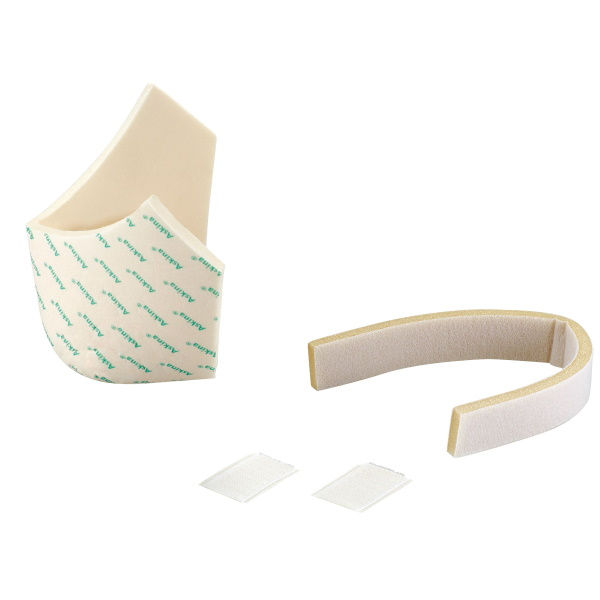
Protezione dall'attrito
Askina® Heel è una medicazione non adesiva idrocellulare per talloni che protegge la zona del tallone dalle sollecitazioni da taglio e riduce la pressione causata da forze esterne. [10]
Gestione delle ulcere del piede diabetico
Una priorità assoluta nel trattamento della sindrome del piede diabetico è quella di evitare l'amputazione. [11] Perché attualmente la maggior parte delle amputazioni del piede e della parte inferiore della gamba vengono eseguite su pazienti con diabete mellito. Si stima che l'amputazione avvenga 40 volte più frequentemente nei pazienti affetti da diabete rispetto ai pazienti nondiabetici. [12]
Guida per il trattamento
A seconda dell'entità del danno tissutale, le ulcere del piede diabetico possono essere classificate in cinque gradi, ciascuno dei quali richiede un trattamento specifico. [13,14,15]
Gestone del biofilm
Prontosan® Wound Irrigation Solution è indicato per la detersione, l'irrigazione e l'idratazione di lesioni acute e croniche. [16]
L'uso di Prontosan® Wound Gel X può fornire una detersione e una decontaminazione duratura del letto della ferita tra un cambio di medicazione e l'altro. [17]
Prontosan® Debridement Pad è stato progettato per supportare la preparazione del letto della ferita quando viene utilizzato in combinazione con Prontosan® Wound Irrigation Solution. [16,18]
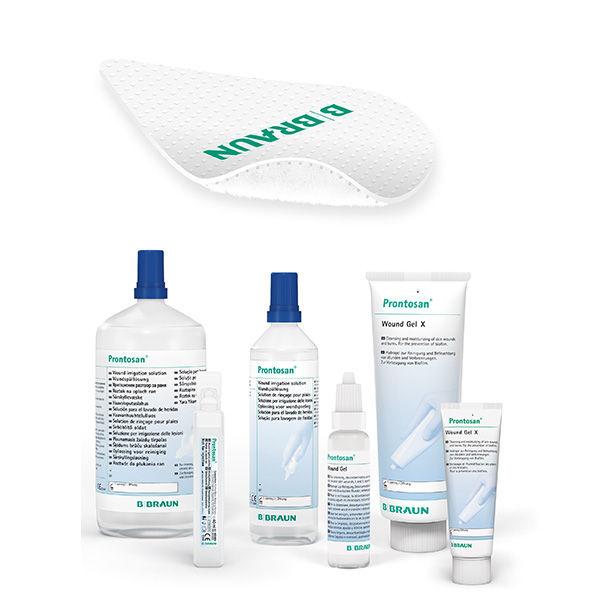
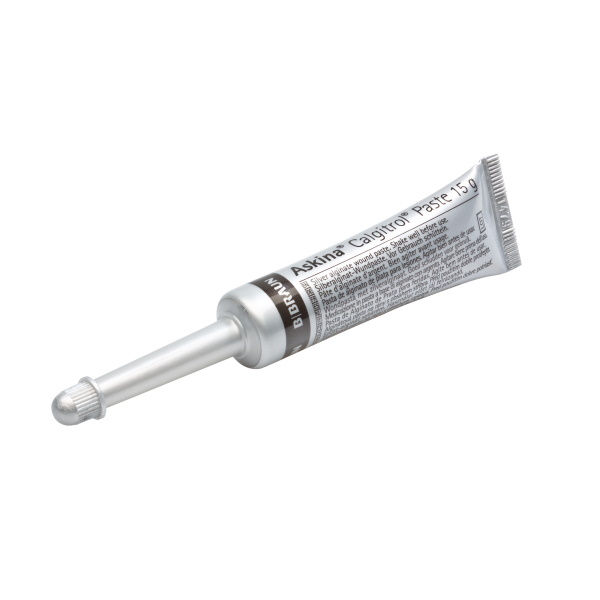
Gestire le infezioni locali
Askina® Calgitrol Paste è una medicazione costituita da una matrice di alginato di argento ionico in forma di pasta, che fornisce una barriera antimicrobica e aiuta a prevenire la contaminazione da batteri esterni. In presenza di essudato della ferita, la matrice di alginato d'argento contribuisce a mantenere un ambiente umido che favorisca le condizioni naturali di guarigione. [19]
Gestire l'essudato della ferita
Askina® DresSil Border è una medicazione autoadesiva in schiuma di poliuretano con adesivo in silicone morbido su un lato e un film in poliuretano al vapore sull'altro.
Gestione del biofilm
Prontosan® Wound Irrigation Solution è indicato per la detersione, l'irrigazione e l'idratazione di lesioni acute e croniche. [16]
L'uso di Prontosan® Wound Gel X può fornire una detersione e una decontaminazione duratura del letto della ferita tra un cambio di medicazione e l'altro. [17]
Prontosan® Debridement Pad è stato progettato per supportare la preparazione del letto della ferita quando viene utilizzato in combinazione con Prontosan® Wound Irrigation Solution. [16,18]

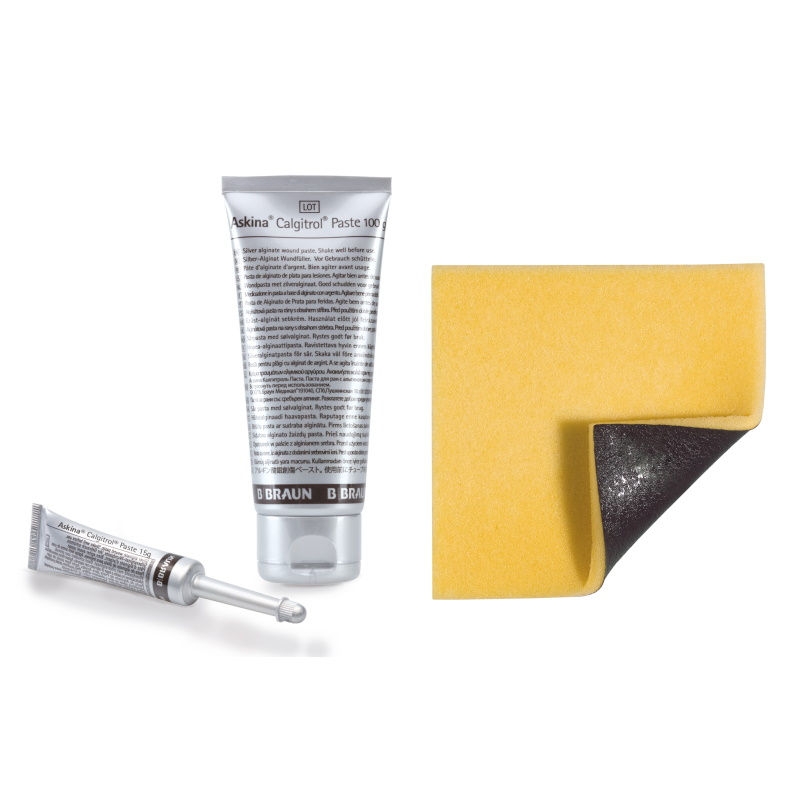
Gestire le infezioni locali
Askina® Calgitrol è una gamma di medicazioni primarie composte da una matrice di alginato di calcio con argento ionico in forma di pasta, che fornisce una barriera antimicrobica e aiuta a prevenire la contaminazione da batteri esterni. In presenza di essudato della lesione, la matrice di alginato all'argento che contribuisce a mantenere un ambiente umido e favorisce le condizioni naturali per la guarigione. Askina® Calgitrol è disponibile in due versioni diverse, Askina® Calgitrol Paste e Askina® Calgitrol Ag. [19,21]
Gestire l'essudato della ferita
Askina® Sorb è una medicazione sterile in alginato adatta alla gestione di lesioni da moderatamente a fortemente essudanti. A contatto con l'essudato della ferita, le fibre di alginato-CMC si gelificano rapidamente e formano un gel morbido e umido che favorisce la guarigione naturale. [22]
Askina® DresSil e Askina® DresSil Border contribuiscono a mantenere un ambiente umido per favorire le condizioni naturali di guarigione con uno strato di contatto in silicone perforato, una schiuma di poliuretano altamente assorbente e un film di poliuretano impermeabile al vapore. [20,23]
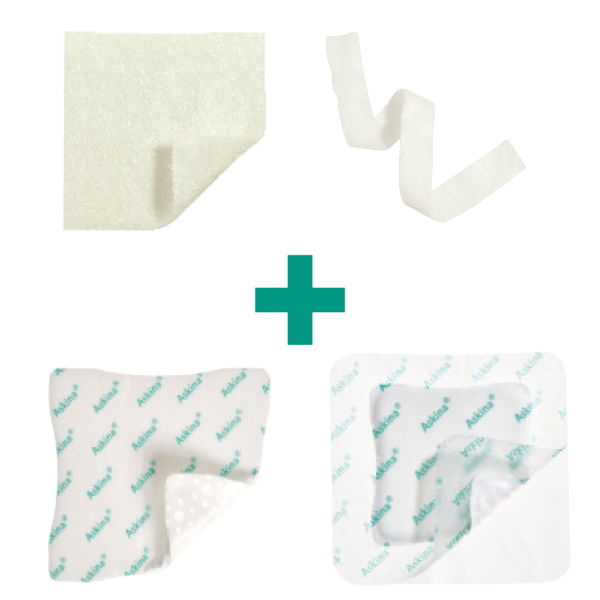
Gestione del biofilm
Prontosan® Wound Irrigation Solution è indicato per la detersione, l'irrigazione e l'idratazione di lesioni acute e croniche. [16]
L'uso di Prontosan® Wound Gel X può fornire una detersione e una decontaminazione duratura del letto della ferita tra un cambio di medicazione e l'altro. [17]
Prontosan® Debridement Pad è stato progettato per supportare la preparazione del letto della ferita quando viene utilizzato in combinazione con Prontosan® Wound Irrigation Solution. [16,18]


Gestire le infezioni locali
Askina® Calgitrol è una gamma di medicazioni primarie composte da una matrice di alginato di calcio con argento ionico in forma di pasta, che fornisce una barriera antimicrobica e aiuta a prevenire la contaminazione da batteri esterni. In presenza di essudato della lesione, la matrice di alginato all'argento che contribuisce a mantenere un ambiente umido e favorisce le condizioni naturali per la guarigione. Askina® Calgitrol è disponibile in due versioni diverse, Askina® Calgitrol Paste e Askina® Calgitrol Ag. [19,21]
Gestire l'essudato della ferita
La schiuma Askina® assorbe l'essudato della ferita attraverso la sua schiuma in poliuretano, garantendo un ambiente umido per la guarigione della ferita. Ha uno strato esterno in film di poliuretano permeabile al vapore, impermeabile all'acqua e ai batteri. [24]
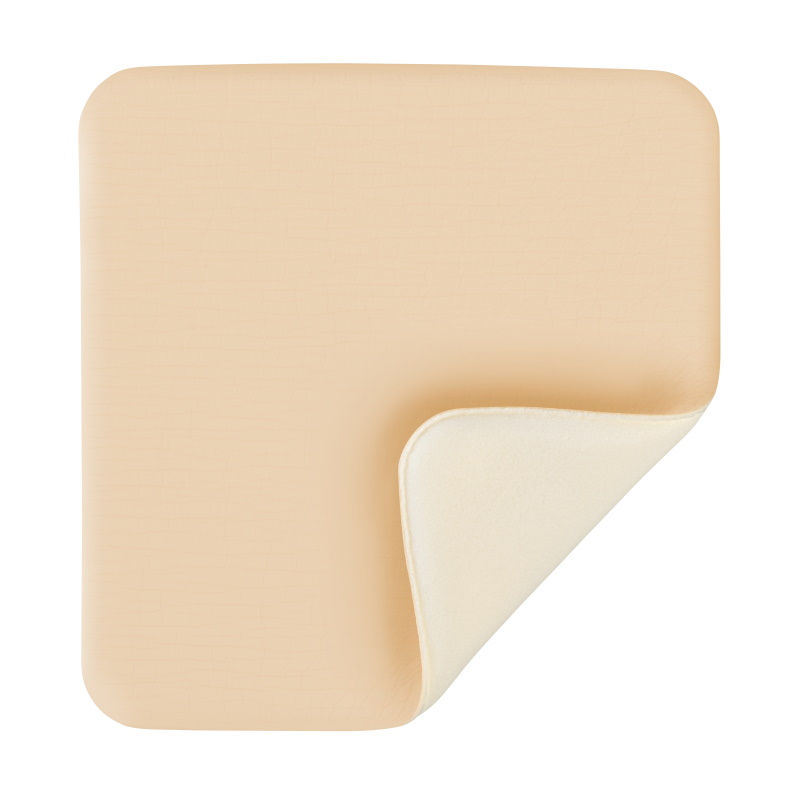
Gestione del biofilm
Prontosan® Wound Irrigation Solution è indicato per la detersione, l'irrigazione e l'idratazione di lesioni acute e croniche.[16]
L'uso di Prontosan® Wound Gel X può fornire una detersione e una decontaminazione duratura del letto della ferita tra un cambio di medicazione e l'altro. [17]
Prontosan® Debridement Pad è stato progettato per supportare la preparazione del letto della ferita quando viene utilizzato in combinazione con Prontosan® Wound Irrigation Solution. [16,18]


Gestire le infezioni locali
Askina® Calgitrol è una gamma di medicazioni primarie composte da una matrice di alginato di calcio con argento ionico in forma di pasta, che fornisce una barriera antimicrobica e aiuta a prevenire la contaminazione da batteri esterni. In presenza di essudato della lesione, la matrice di alginato all'argento che contribuisce a mantenere un ambiente umido e favorisce le condizioni naturali per la guarigione. Askina® Calgitrol è disponibile in due versioni diverse, Askina® Calgitrol Paste e Askina® Calgitrol Ag. [19,21]
Gestire l'essudato della ferita
La schiuma Askina® assorbe l'essudato della ferita attraverso la sua schiuma in poliuretano, garantendo un ambiente umido per la guarigione della ferita. Ha uno strato esterno in film di poliuretano permeabile al vapore, impermeabile all'acqua e ai batteri. [24]

La nostra gamma prodotti
Prevenzione e protezione della pelle
Preparazione del letto della ferita e gestione del biofilm
Infezione della ferita e gestione degli odori
Gestione dell'essudato
[1] Rümenapf G, Morbach S, Rother U, Uhl C, Görtz H, Böckler D, Behrendt CA, Hochlenert D, Engels G, Sigl M; Kommission PAVK und Diabetisches Fußsyndrom der DGG e. V.. Diabetisches Fußsyndrom – Teil 1 : Definition, Pathophysiologie, Diagnostik und Klassifikation [Diabetic foot syndrome-Part 1 : Definition, pathophysiology, diagnostics and classification]. Chirurg. 2021 Jan;92(1):81-94. German. doi: 10.1007/s00104-020-01301-9. PMID: 33170315; PMCID: PMC7819949.
[2] Sommer TC, Lee TH. Charcot foot: the diagnostic dilemma. Am Fam Physician. 2001 Nov 1;64(9):1591-8. Erratum in: Am Fam Physician 2002 Jun 15;65(12):2436-8. PMID: 11730314.
[3] Callaghan BC, Cheng HT, Stables CL, Smith AL, Feldman EL. Diabetic neuropathy: clinical manifestations and current treatments. Lancet Neurol. 2012 Jun;11(6):521-34. doi: 10.1016/S1474-4422(12)70065-0. Epub 2012 May 16. PMID: 22608666; PMCID: PMC4254767.
[4] Takeo M, Lee W, Ito M. Wound healing and skin regeneration. Cold Spring Harb Perspect Med. 2015 Jan 5;5(1):a023267. doi: 10.1101/cshperspect.a023267. PMID: 25561722; PMCID: PMC4292081.
[5] Lauterbach S, Kostev K, Kohlmann T. Prevalence of diabetic foot syndrome and its risk factors in the UK. J Wound Care. 2010 Aug;19(8):333-7. doi: 10.12968/jowc.2010.19.8.77711. PMID: 20852505
[6] Sämann A, Tajiyeva O, Müller N, Tschauner T, Hoyer H, Wolf G, Müller UA. Prevalence of the diabetic foot syndrome at the primary care level in Germany: a cross-sectional study. Diabet Med. 2008 May;25(5):557-63. doi: 10.1111/j.1464-5491.2008.02435.x. Epub 2008 Mar 14. PMID: 18346154.
[7] Strain WD, Paldánius PM. Diabetes, cardiovascular disease and the microcirculation. Cardiovasc Diabetol. 2018 Apr 18;17(1):57. doi: 10.1186/s12933-018-0703-2. Erratum in: Cardiovasc Diabetol. 2021 Jun 11;20(1):120. PMID: 29669543; PMCID: PMC5905152.
[8]. see current IFU Linovera®
[9] see current IFU Linovera® Emulsion
[10] see current IFU Askina® Heel
[11] Olm M, Kühnl A, Knipfer E, Salvermoser M, Eckstein HH, Zimmermann A. Operative Versorgung von Diabetikern mit vaskulären Komplikationen : Sekundärdatenanalyse der DRG-Statistik von 2005 bis 2014 in Deutschland [Operative treatment of diabetics with vascular complications : Secondary data analysis of diagnosis-related groups statistics from 2005 to 2014 in Germany]. Chirurg. 2018 Jul;89(7):545-551. German. doi: 10.1007/s00104-018-0628-z. PMID: 29589075
[12] Narres M, Kvitkina T, Claessen H, Droste S, Schuster B, Morbach S, Rümenapf G, Van Acker K, Icks A. Incidence of lower extremity amputations in the diabetic compared with the non-diabetic population: A systematic review. PLoS One. 2017 Aug 28;12(8):e0182081. doi: 10.1371/journal.pone.0182081. PMID: 28846690; PMCID: PMC5573217.
[13] Jeon BJ, Choi HJ, Kang JS, Tak MS, Park ES. Comparison of five systems of classification of diabetic foot ulcers and predictive factors for amputation. Int Wound J. 2017 Jun;14(3):537-545. doi: 10.1111/iwj.12642. Epub 2016 Oct 10. PMID: 27723246; PMCID: PMC7949506.
[14] Santema TB, Lenselink EA, Balm R, Ubbink DT. Comparing the Meggitt-Wagner and the University of Texas wound classification systems for diabetic foot ulcers: inter-observer analyses. Int Wound J. 2016 Dec;13(6):1137-1141. doi: 10.1111/iwj.12429. Epub 2015 Feb 26. PMID: 25720543; PMCID: PMC7949589.
[15] Wagner FW. The dysvascular foot: a system for diagnosis and treatment. Foot Ankle 1981;2
[16] see current IFU Prontosan® Wound Irrigation Solution
[17] see current IFU Prontosan® Wound Gel X
[18] see current IFU Prontosan® Debridement Pad
[19] see current IFU Askina® Calgitrol Paste
[20] see current IFU Askina® DresSil Border
[21] see current IFU Askina® Calgitrol AG
[22] see current IFU Askina® Sorb
[23] see current IFU Askina® DresSil
[24] see current IFU Askina® Foam
[25] see current IFU Askina® Carbosorb
Restate connessi con My B. Braun
Con il tuo account personalizzato, la tua esperienza online sarà più facile, più comoda e più sicura.
